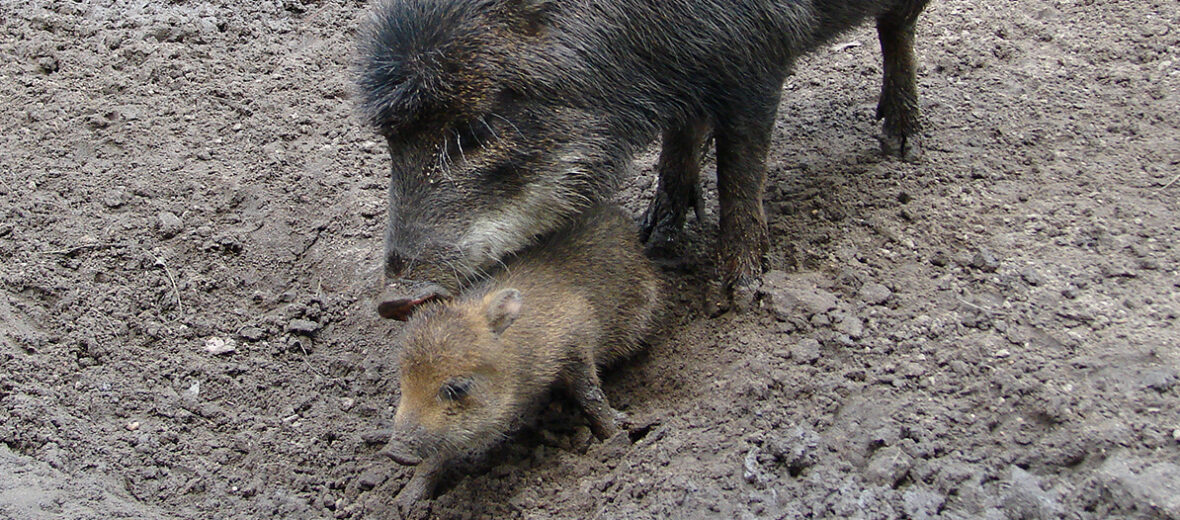
The white-lipped peccary can be found in Mexico, Central America, and throughout much of South America. They prefer thick, humid, tropical forests, Cerrado, dry forests, grasslands, mangroves, and dry xerophytic habitats. Due to habitat loss and destruction at the hands of residential and commercial developments, agriculture, and logging; hunting; and trapping, these critters are listed as Vulnerable by the IUCN. Their populations are also decreasing.
First the Stats…
Scientific name: Tayassu pecari
Weight: Up to 88 lbs.
Length: Up to 3.6 feet
Height: Up to 35 inches
Lifespan: Up to 13 years
Now on to the Facts!
1.) White-lipped peccaries are diurnal (active during the day), with the majority of their activity being in the morning and the afternoon.
2.) They can dwell in large herds of up to 2,000 individuals. Most herds consist of 20 – 300 individuals though.
3.) Up to 75% of their day is spent roaming about, grazing, and wallowing in mud.
4.) Peccaries produce a strong and pungent skunk-like aroma. So, more often than not, they’re smelled long before they’re seen.
5.) These critters are loud and will often chatter their teeth and grunt towards each other to stay in contact with the other members of the herd.
But wait, there’s more on the white-lipped peccary!
6.) When threatened they will bark and bare their teeth in an attempt to thwart an attack.
7.) Various fruits, nuts, vegetation, and also some amounts of animal matter are all on the menu, making them omnivores (eat plant and animal matter).
Did you know…?
White-lipped peccary piglets are born precocial (self sufficient), and can walk and run just hours after birth.
8.) They breed throughout the year, based on their location.
9.) Females undergo up to a 162 day gestation (pregnancy) that yields up to 4 piglets.
10.) Piglets are independent in up to 6 months.
Now a Short White-Lipped Peccary Video!
Be sure to share & comment below! Also, check out the Critter Science YouTube channel. Videos added regularly!
Want to suggest a critter for me to write about? Let me know here.
Some source material acquired from: Wikipedia & IUCN
Photo credit: Chrumps



